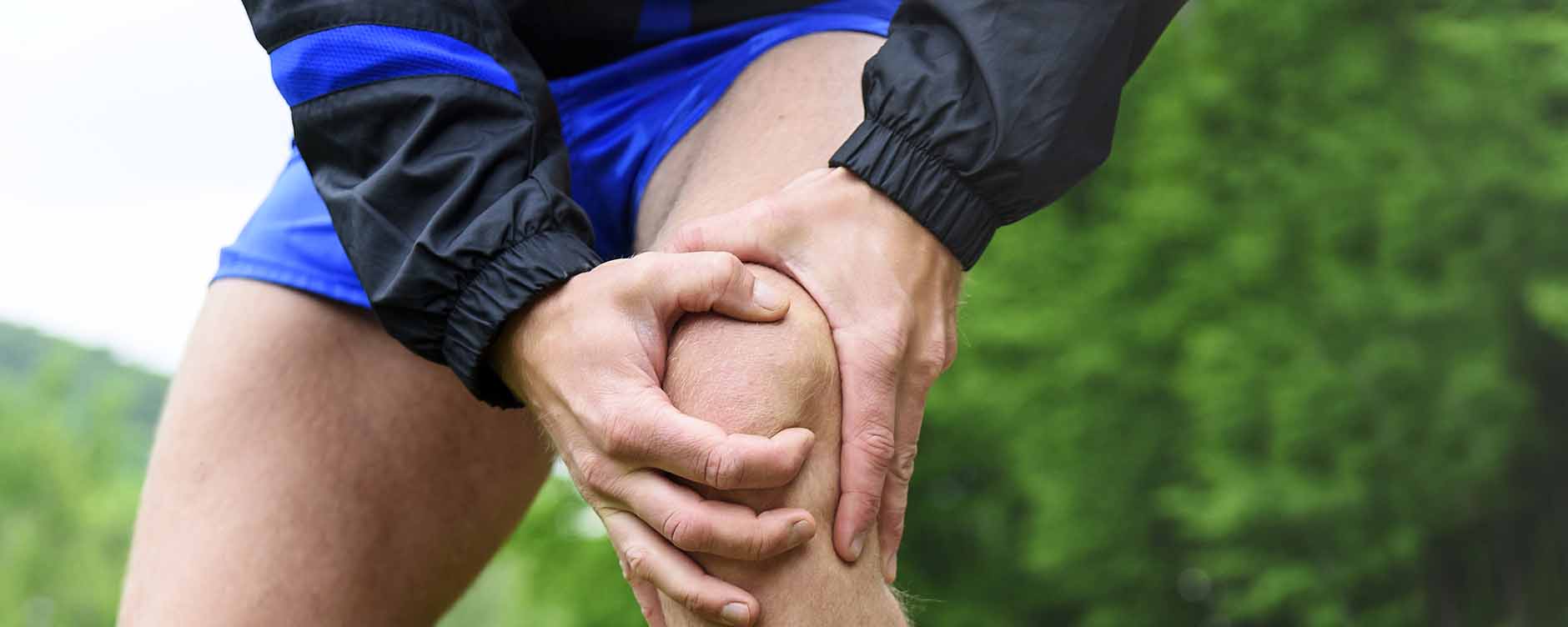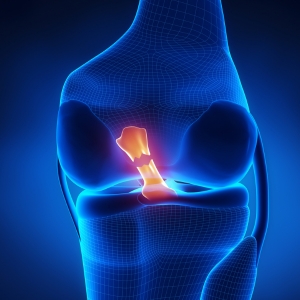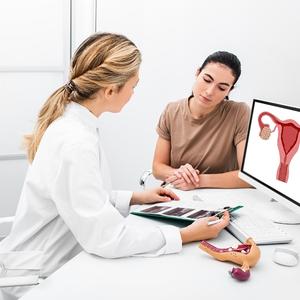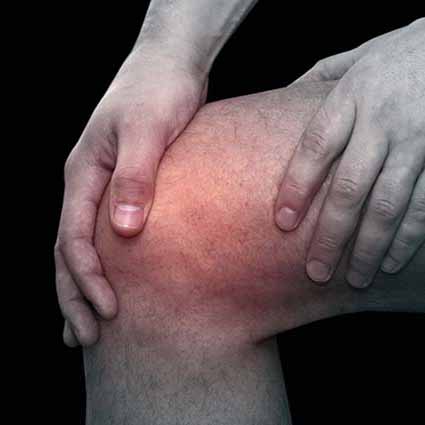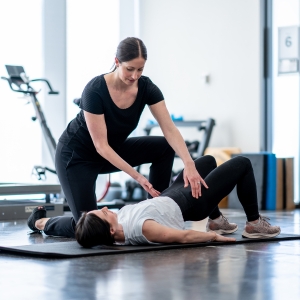Among all the joints in the body, the knees are the most easily injured. They are also vulnerable to degenerative wear and tear, inflammatory and infection-related arthritis.

Common causes of knee pain
Knee pain is a very common and can occur in different age groups. For youngsters and active athletes, knee pain may arise from sport injuries, causing stress on the joints and soft tissues around the knee joints. It can also cause structural damage, such as ruptured ligaments and torn cartilage. For the middle-aged and the elderly, degenerative changes over the knee joint and cartilage are common.
The common causes of knee injuries include:
- Direct impact on the knee joint when doing sports or from a fall
- Repeated stress or overuse of the soft tissues or muscles of the knee
- Frequent sudden turning, pivoting and stopping, for example, when playing football or skiing
- Awkward landings from a fall or a jump, for example, when playing basketball
- Age-related degeneration
Signs and symptoms
Symptoms vary depending on the type of injuries and conditions:
1. Ligament injuries
- Immediate pain on walking or knee bending
- A popping sound on straightening of the knee
- Inability to bear weight by the injured knee
2. Tendon injuries (tendinitis):
- Swelling in the front of the knee
- Worsening pain when jumping, running, squatting, or walking up and down the stairs
- Inability to completely straighten the knee
3. Meniscus injuries (meniscus refers to the shock absorber cartilage located between the thigh and leg bones):
- Pain and swelling around the knee joint
- Inability to straighten the knee completely, and with a “locked” sensation
4. Osteoarthritis (degenerative arthritis):
- Worsening pain when walking or walking up and down the stairs or slope
- Swelling with increased temperature in the knee
- Stiffness (limitations in range) and tightness
- Creaking sounds
- Weak knee muscles
Diagnosis
Medical history, the mechanism of injury and area of pain are useful to make a provisional diagnosis. Physiotherapists can conduct some special tests such as a ligament stress test or a stability test in order to confirm whether there is any specific ligament or structure being injured. In addition, X-rays can be conducted to look for any structural problem, and MRI tests may reveal soft tissue trauma and damage.
Treatment options
Conservative treatments
For those who have minor soft tissue strain or are suffering from the early stage of osteoarthritis, anti-inflammatory medication prescribed by the doctor can help control the pain. Physiotherapists can also help reduce pain and inflammation by electrotherapy treatment, ranging from ultrasound, interferential therapy (treatment making use of mid-frequency current), to acupuncture. When the pain is under control, the treatment goal will be to maintain the patient’s muscle strength and the range of motion of the knee. Better strength over the knee muscles means better support, which will reduce the direct pressure on knee joints. Knee support and knee braces are sometimes prescribed to give support to the knee as well as to alleviate pain. Knee care and modification to daily activities are also very important, especially for osteoarthritis cases. Strengthening and stretching exercises are often prescribed by physiotherapists for strengthening the muscles. Patients should seek medical advice, and wait till they have recovered from the acute stage.
Static quadriceps
- Lie down on the back. Tighten the kneecap with a count of 5-10 seconds, then relax.

Hamstring curls
- Face down, bend the knee within a comfortable range, then lowerit slowly with control.
- Add ankle weights for further strengthening of hamstring muscles.
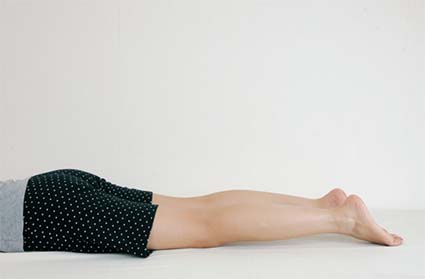
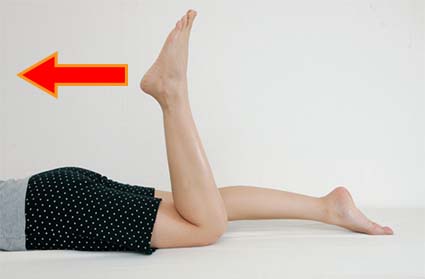
Straight leg raises
- Lie down on the back. Lift the whole leg up in a straight line and with foot flexed. Hold for 5-10 seconds, then lower it slowly with control.
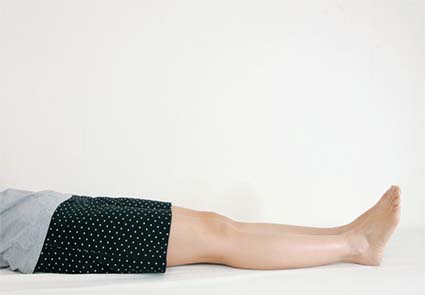
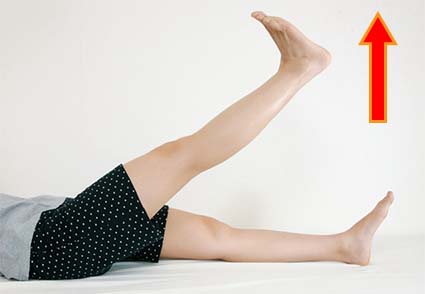
Mini-squat exercise
- Lean against the wall. Slowly bend down both knees into a shallow squat. Knees should be “on the same line” as the feet. Hold for 5-10 seconds and slowly straighten the knees.
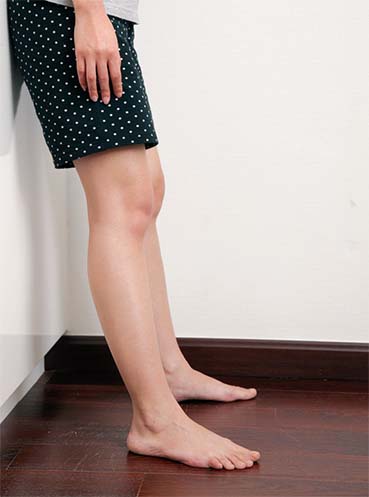
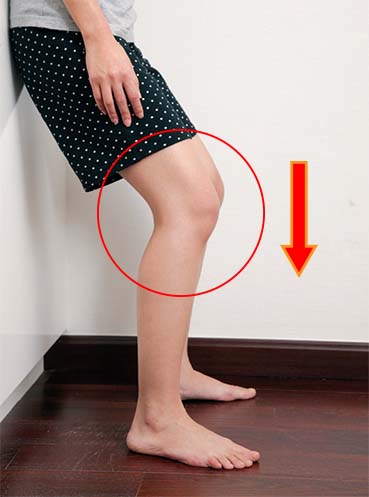
Surgical treatment
Patients who have severe structural damage such as anterior cruciate ligament (ACL) rupture, meniscus tear or are in the later stage of osteoarthritis, surgical intervention may be required for repairing and reconstructing the knee structure.
Common surgical options include ACL reconstruction, arthroscopic meniscus repair and debridement. For cases with severe degeneration of knee joints, total knee replacement may be considered to correct the joint alignment and restore the function of the knee joints. Intensive physiotherapy treatment is needed for rehabilitation and better recovery after the operation.
Prevention of knee pain and daily care
For athletes and people active in sports, adequate stretching and warm up are very important before activities. Active muscle training for lower limbs and core muscles can help reduce stress and pressure on the knee joints. To minimize the chance of ligament or muscle injury, specially made adhesive tapes wrapping around the knee joints could be used to give extra support to the soft tissues during vigorous contact sports, such as rugby and football, While there is no stopping the ageing process, the elderly persons and people with knee pain should pay attention to the following advice to protect the knee joints:
- Avoid walking up and down the stairs and the slopes. Take the elevator or escalator if there is any
- Avoid doing full squats and kneeling
- Wear proper footwear that can maintain good alignment on hip, knee and ankle joints
- Keep body weight under control as being overweight can apply more pressure on the knee joints
- Avoid carrying heavy objects when walking
Articles on this website are informative only and not intended to be a substitute for professional medical advice, diagnosis or treatment. They should not be relied upon for specific medical advice.
To make a physiotherapy appointment, please call 2849 0760 or email This email address is being protected from spambots. You need JavaScript enabled to view it..
41 Mount Kellett Road, The Peak, Hong Kong
t 2849 0111
This email address is being protected from spambots. You need JavaScript enabled to view it.

Information provided by:
Physiotherapy Department, Matilda International Hospital
Reference from:
UpToDate
